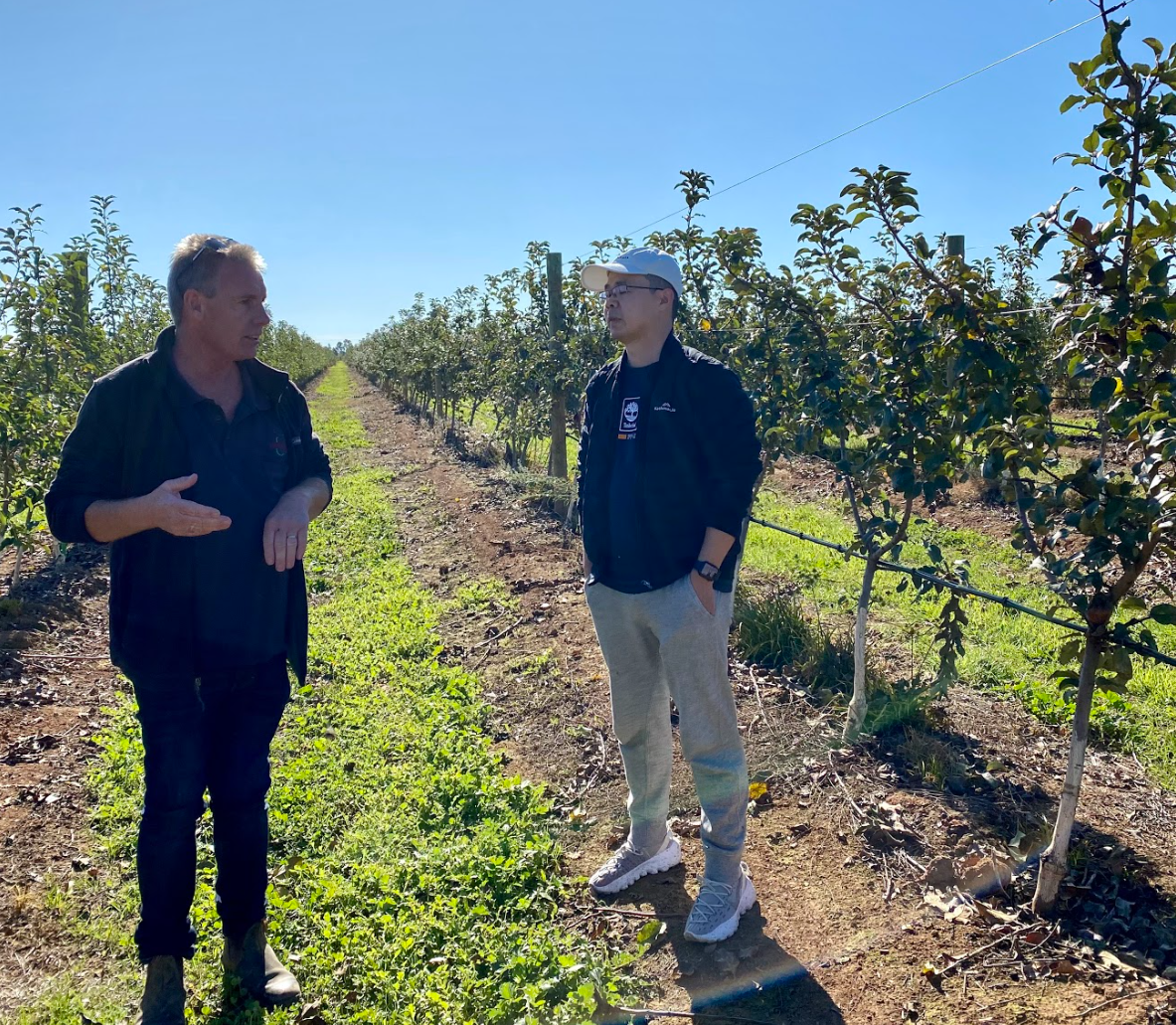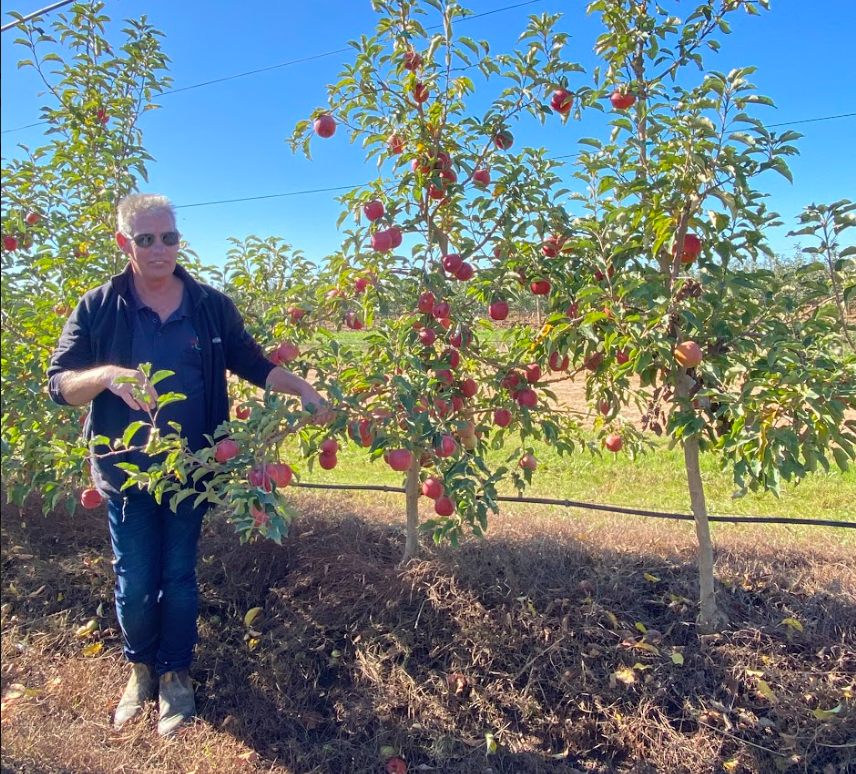Jeftomson is changing how orchards plant and pack produce
Going by that age old saying about apples a doctors, the SproutX team should be in tip top shape this winter going by our level of fruit consumption earlier this month.
For those in the know, Jeftomson Orchard has got a spanking new state of the art packing shed, and we were lucky to get a chance to visit as a graduation trip for our Pre-Accelerator A22 cohort together with NorVic Foods.
Not in any particular order, below are the insights the cohort took note of:
The system of dendrometers and soil moisture probes to remotely monitor orchard conditions for irrigation management
More than 60% of the orchards are planting their crop formation with robotic pickers in mind
Automatic conveyors with smart sensors to sort and grade apples by color, size and internal damage (rot and/ or pests)
Fully autonomous robotic conveyors to move the work-in-process batches around the factory (there is even a sick bay where the bots can self navigate to for a check up)
Fully autonomous and semi-autonomous packing lines where apples and pears are packed into a variety of pack sizes and boxes with robotic arms (with the occasional human assistance)
Smart cold storage with state-of-the-art environmental control and regulation systems
Self-made core probe sensor that eliminates the need to frequently and personally check apples stacked in a crate 3 meters high in the cold storage rooms
Just a tractor attached pruner alone saved a whooping 25% of orchard operation cost (It has also received the cohort’s choice award for a must have farm tool in a post-apocalyptic universe situation)
Pneumatic Defoliator aka a leafblower
This tractor attachment uses alternating pulses of air to crush leaf structure to allow more sunlight through (+ colour for better marketability) and to create just a smidge of stress for the trees (+ active and healthy growth).
🚜 to the packing shed 💨
Apples were graded and sorted by colours, sizes, and internal damage after passing through smart sensors. All before getting picked up by bots (yellow trolley cranes on the left of image) to move them onto the next station.
“There is definitely still room for innovation.”
With the level of adaptation of technology on site, we’re pretty surprised to hear this remark.
Michael Parker, chief of engineering, shared an example of how manual pickers are still required on the orchard for the 3-dimensional rows of crops (this cost adds up to become the largest operational expense on the orchard).
But wait, what does 3-D stand for in orchard terms you ask?
A 2 dimensional apple tree (left), imagine crops are pruned to a uniform and flat Y shape, tightly spaced, and kept at a certain height for easy harvesting for robot pickers. Whilst with a 3 dimensional apply tree (right), you have your traditional laissez-faire tree shape with multiple nooks and cranny a robotic picking arm couldn’t get into.
This however, is all within the expectations of Hugh Zhou, a SproutX pre-accelerator cohort participant, who is a key member of the Monash Robotic Arm lead by Dr Chao Chen, the Director of Laboratory of Motion Generation and Analysis (LMGA).
New autonomous robotic technology developed by Monash University researchers has the potential to become the ‘apple of my eye’ for Australia’s food industry as it deals with labour shortages and an increased demand for fresh produce.
“Our developed vision system can not only positively identify apples in a tree within its range in an outdoors orchard environment by means of deep learning, but also identify and categorise obstacles, such as leaves and branches, to calculate the optimum trajectory for apple extraction.”
The team left the shed with new found knowledge but also a little wish list:
an solution that can trim off the leaves that sometimes nestle a little bit too closely to where the stem meets the fruit
a weed sprayer that can handle the rocky terrain of soil that is high in clay ratio (cracks easily)
ideas of how to re-purpose the organic waste during the initial cleaning process of the produce packing line
If you have any ideas around this you’d like to brainstorm with us, drop us a line at ashlee.tayler@sproutx.com.au!
🚜 speaking of organic waste 💨
To complete our tour, we made a pit stop at the Western Composting Technology. Although we were quite stumped at the lack state of regulation from a Federal level on waste management and the shallow scope of national education on the topic, we felt optimistic on witnessing the building of societal consciousness around the protection of our environment and learning our individual role in it.
Did you know that:
Waste management facilities and organizations in Australia are not government-owned but rather contracted private companies
80%+ of the organic waste that is brought in has high levels of contamination - plastic that is not biodegradable or glass, and even tennis balls
In a 2019 audit done by Port Phillip, FOGO (food organics and garden organics) make up to 46% of the waste in our bins at home
The staff on site congregated around the sifting grounds, where they pick off the contamination, before the waste gets scooped up to be processed by “The Tunnel” for the next 20 - 30 days.
The tunnel composting system is the largest and the main piece of technology on the site. It has inbuilt sensors to monitor the internal oxygen, temperature, moisture, and ammonia levels to ensure their even distribution throughout the breaking down of organic matter. When there are reasonably clean input waste streams, these tunnels can produce compost that can be used as a soil improver for agriculture, horticultural or soil improvement. This method of recycling creates a circle for organic based material which is extremely important for a good structure of the ground. It keeps minerals and organic fractions where they belong.
The jarring contrast between the sophistication of compost technology and the staff manually picking out plastic and golf balls from the “green waste” left the team pondering:
Is there an agrifoodtech solution for human behaviour?
Coming up next on our calendar is an in-person Melbourne Meetup event on 16 June Thursday 5pm @Stone & Chalk Melbourne. Join us for a cozy story telling night with a fantastic speaker line up from Dairy Australia, Simplot, Bayer, Bupa, Fonterra, and Outback Australia. See full event details here.








